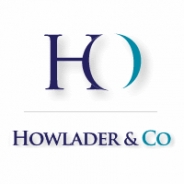
An introduction to the principles and potential benefits of the VAT Flat Rate Scheme, by accountants Howlader and Co.
What is the VAT Flat Rate Scheme?
HMRC introduced the Flat Rate Scheme (FRS) in 2002 to simplify the VAT accounting process for small businesses.
Under the scheme, your business pays a fixed percentage of its turnover at the end of the VAT period (usually quarterly, although annual VAT accounting is still an option) rather than calculating VAT on a transaction-by-transaction basis.
How does it Differ from Standard VAT Accounting?
With the FRS you continue to charge VAT at the normal rate, but the way in which you account for VAT to HMRC changes.
Instead of working out the difference between input and output VAT, you pay a flat rate percentage of your business’ VAT-inclusive turnover. The percentage varies according to the business sector you’re in.
Businesses can’t reclaim VAT on purchases under the FRS; this has been factored into the percentage you pay at the end of the period. However, it is possible to reclaim VAT on capital asset purchases of £2,000 or more.
Who is Eligible for the FRS?
Any business whose estimated turnover for the next 12 months is £150,000 or less is eligible to join the scheme.
You can remain in the scheme until your VAT-inclusive turnover exceeds £230,000.
What are the Benefits of the FRS?
The most obvious benefit is that it simplifies the VAT accounting process. Adopting the scheme will save you time and stress by eliminating the need to record quarterly VAT on sales and purchases.
This is particularly helpful for small businesses that may not have the expertise or resources to process their accounts in the traditional way.
The scheme will enable you to manage your cash flow better as you’ll be able to easily calculate how much VAT you owe on your takings in advance.
The FRS could also potentially save your business money. For example:
Standard VAT
| Total Billings | £60,000 |
| Output VAT (20%) | £12,000 |
| Total Invoiced | £72,000 |
| VAT Reclaimed through purchases | £900 |
| Total Payable to HMRC | £11,100 |
Flat Rate Scheme
| Total Billings | £60,000 |
| Output VAT (20%) | £12,000 |
| Total Invoiced | £72,000 |
| Total Payable to HMRC (14.5% of VAT-inclusive Turnover) | £10,440 |
In this example, the Flat Rate Scheme yields a net saving of £660 for the period.
If you’re in your first year of VAT registration, HMRC will also reduce your FRS rate by 1%.
How does the FRS Differ from Industry to Industry?
The FRS rate you pay will vary depending on the sector your business operates in. Rates currently range from 4% to 14.5%.
For example, accountants, engineers and IT consultants generally pay 14.5%, journalists pay 12.5% and food retailers pay 4%. A full list of the differing rates is available from HMRC at A to Z of Flat Rate Percentages by Sector.
Whether your business benefits from the scheme will depend on which sector you’re in and the number of purchases and expenses your business incurs.
Businesses with low purchases and expenses may well make a financial saving. Contractors, for example, are likely to benefit from the scheme; the higher their turnover, the more likely it is to be advantageous.
However, if your business operates in the service sector and makes significant purchases, the scheme may result in a financial loss. Consider VAT lost on purchases against the benefit of a flat rate VAT calculation before applying for FRS.
Tax savings could potentially be in the thousands, but errors could cost you an equally large sum. It’s advisable to seek the advice of an accountant before enrolling in the FRS.



Please register or log in to add comments.
There are not comments added